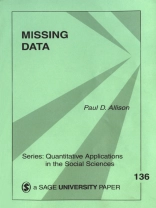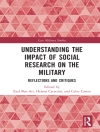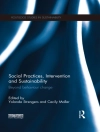Sooner or later anyone who does statistical analysis runs into problems with missing data in which information for some variables is missing for some cases. Why is this a problem? Because most statistical methods presume that every case has information on all the variables to be included in the analysis. Using numerous examples and practical tips, this book offers a nontechnical explanation of the standard methods for missing data (such as listwise or casewise deletion) as well as two newer (and, better) methods, maximum likelihood and multiple imputation. Anyone who has been relying on ad-hoc methods that are statistically inefficient or biased will find this book a welcome and accessible solution to their problems with handling missing data.
Inhoudsopgave
Series Editor′s Introduction
1. Introduction
2. Assumptions
Missing Completely at Random
Missing at Random
Ignorable
Nonignorable
3. Conventional Methods
Listwise Deletion
Pairwise Deletion
Dummy Variable Adjustment
Imputation
Summary
4. Maximum Likelihood
Review of Maximum Likelihood
ML With Missing Data
Contingency Table Data
Linear Models With Normally Distributed Data
The EM Algorithm
EM Example
Direct ML
Direct ML Example
Conclusion
5. Multiple Imputation: Bascis
Single Random Imputation
Multiple Random Imputation
Allowing for Random Variation in the Parameter Estimates
Multiple Imputation Under the Multivariate Normal Model
Data Augmentation for the Multivariate Normal Model
Convergence in Data Augmentation
Sequential Verses Parallel Chains of Data Augmentation
Using the Normal Model for Nonnormal or Categorical Data
Exploratory Analysis
MI Example 1
6. Multiple Imputation: Complications
Interactions and Nonlinearities in MI
Compatibility of the Imputation Model and the Analysis Model
Role of the Dependent Variable in Imputation
Using Additional Variables in the Imputation Process
Other Parametric Approaches to Multiple Imputation
Nonparametric and Partially Parametric Methods
Sequential Generalized Regression Models
Linear Hypothesis Tests and Likelihood Ratio Tests
MI Example 2
MI for Longitudinal and Other Clustered Data
MI Example 3
7. Nonignorable Missing Data
Two Classes of Models
Heckman′s Model for Sample Selection Bias
ML Estimation With Pattern-Mixture Models
Multiple Imputation With Pattern-Mixture Models
8. Summary and Conclusion
Notes
References
About the Author
Over de auteur
Paul D. Allison, Ph.D., is Professor of Sociology at the University of Pennsylvania where he teaches graduate courses in methods and statistics. He is also the founder and president of Statistical Horizons LLC which offers short courses on a wide variety of statistical topics.After completing his doctorate in sociology at the University of Wisconsin, he did postdoctoral study in statistics at the University of Chicago and the University of Pennsylvania. He has published eight books and more than 60 articles on topics that include linear regression, log-linear analysis, logistic regression, structural equation models, inequality measures, missing data, and survival analysis.Much of his early research focused on career patterns of academic scientists. At present, his principal research is on methods for analyzing longitudinal data, especially those for determining the causes and consequences of events, and on methods for handling missing data.A former Guggenheim Fellow, Allison received the 2001 Lazarsfeld Award for distinguished contributions to sociological methodology. In 2010 he was named a Fellow of the American Statistical Association. He is also a two-time winner of the American Statistical Association’s award for “Excellence in Continuing Education.”












